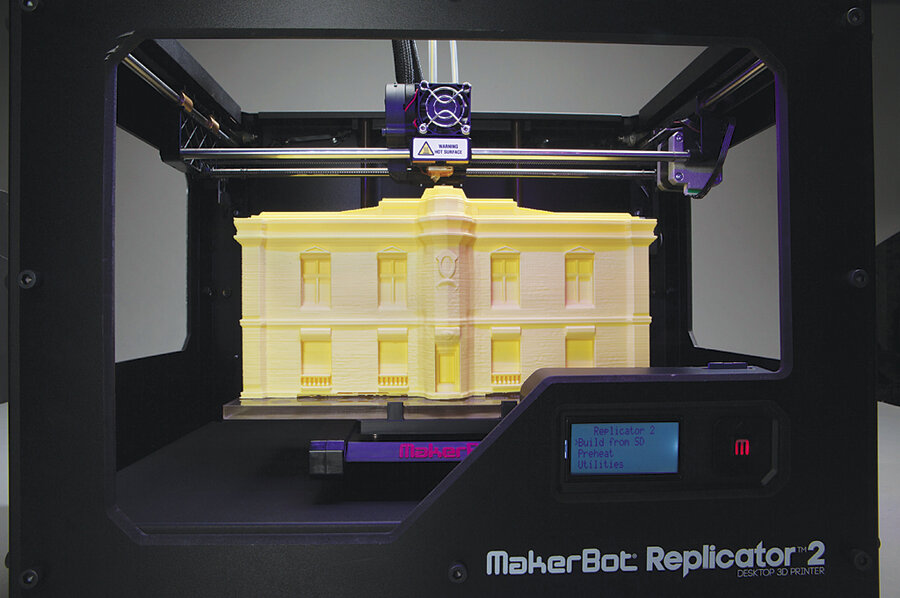MakerBot Replicator 2: Print your own objects at home
Loading...
A little bit of science fiction has popped up in lower Manhattan. This fall brought the opening of the first MakerBot store, a retail spot designed to show off and sell 3-D printers such as the Replicator 2.
Like its "Star Trek" eponym, the Replicator creates objects on command. The device works a bit like an inkjet printer, but instead of using ink, the nozzle spits out tiny dollops of plastic. It builds up objects layer by layer, starting at the base and working upward until the entire plastic toy, anatomical model, or replacement car part is complete.
When the Monitor first wrote about 3-D printers back in 2009, the movement existed mostly in high-end factories and the garages of wealthy or at least very devoted tinkerers.
But the Replicator 2 has a different aim. MakerBot designed its newest printer for schools, workshops, and homes.
"It's amazing how far 3-D printing has come," says Taylor Absher, a senior technology specialist at New York University's Advanced Media Studio. His lab helps students and professors use the school's professional 3-D printers. As people realized the power of printing nearly any shape that they can think up, the number of requests to his office doubled last year. "But more and more, we have people come in with objects that they printed at home," he says. "And we've had one customer that we lost because he now has his own MakerBot."
While professional 3-D printers range from the size of microwave ovens to refrigerators and can cost tens of thousands of dollars, MakerBot's Replicator 2 fits on a desk and costs $2,199. It prints objects up to 11-by-6-by-6-inches out of biodegradable plastic made from cornstarch. The higher-end Replicator 2X uses ABS, the same plastic used by LEGO. A one-kilogram spool of either plastic – enough to print about 400 chess pieces – goes for $48.
While previous MakerBot printers were made of wood and required hours to assemble and calibrate, the metal Replicator 2 arrives ready to go. People may design their own objects in one of many 3-D computer programs, or they can head to www.thingiverse.com, where MakerBot users have posted more than 25,000 schematics ready to download, free of charge. Featured items include designs for plastic gliders, jewelry, and replicas of famous statues.
Still, MakerBot chief executive Bre Pettis says the Replicator 2 is a "prosumer" device – one designed for "anyone who loves to make things and feels comfortable with technology."
"Having a MakerBot on your desktop or your kitchen counter," says Mr. Pettis in an e-mail, "means you can want something and then make the exact right one for you."
For more on how technology intersects daily life, follow Chris on Twitter @venturenaut.







